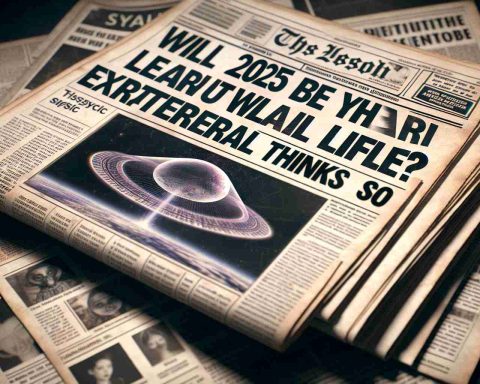- UFO sightings have surged in Central Europe, with 1,084 reports in a year, captivating public interest.
- Many sightings are linked to the Starlink satellites launched by SpaceX, often mistaken for alien spacecraft.
- Planets like Venus and Jupiter, along with the star Sirius, frequently contribute to misidentified UFO sightings.
- Common objects such as drones, LED balloons, and airplanes are also culprits of mistaken identity in the skies.
- CENAP, founded in 1973, analyzes these reports, cross-referencing with astronomy and satellite data to clarify mysteries.
- Understanding these phenomena is vital for aerospace defense as commercial space travel advances.
- The enduring fascination with the skies reflects humanity’s timeless curiosity and quest for understanding.
Beneath the vast canopy of the night sky, a swell of mysterious UFO sightings is drawing our eyes upward in wonder and speculation. The Central European Network for Analyzing Paranormal Phenomena (CENAP) in Lützelbach, Germany, has recorded a staggering 1,084 reports in just a year from Germany, Austria, and Switzerland. This dramatic rise far eclipses the typical annual figures, sparking fervent discussions and rampant speculation.
Yet, the truth behind this celestial spectacle is often more grounded than tales of alien visitors suggest. A significant number of these sightings originate from the mesmerizing train of Starlink satellites, launched by SpaceX. These radiant high-tech objects streak across the sky, often mistaken for extraterrestrial craft. Meanwhile, planets like Venus and Jupiter, along with the star Sirius, add their own celestial dazzle, frequently misidentified as UFOs.
Objects as commonplace as drones, LED balloons, and airplanes also contribute to the growing catalog of misattributed sightings. Founded in 1973, CENAP works tirelessly to untangle these mysteries. By meticulously cross-referencing each report against astronomical data and satellite trajectories, they sift through thousands of cases, separating genuine unknowns from identifiable phenomena.
As commercial space travel edges closer to reality, understanding these aerial mysteries isn’t merely an intellectual endeavor — it’s a necessity for aerospace defense. The ability to distinguish potential threats amidst a field of misinterpretations is crucial. Whether we’re on the cusp of redefining our relationship with the cosmos or simply untangling a web of misunderstandings, one truth remains: our fascination with the skies is as timeless as ever.
Mystery in the Skies: Unveiling the Truth Behind UFO Sightings
How is the surge in UFO sightings impacting public perception of space exploration?
The dramatic rise in UFO sightings, as recorded by CENAP, is significantly influencing public perception of space exploration and aerospace defense. With 1,084 reports in a single year, there is growing curiosity and skepticism about the sources of these sightings. The sighting of Starlink satellites, often mistaken for UFOs, underscores the need for public education on identifying celestial objects. This increased awareness can enhance the credibility and understanding of commercial space missions.
Could commercial space travel contribute to future UFO sightings?
Yes, as commercial space travel becomes more prevalent, the volume of objects in the sky will likely increase, leading to more UFO sightings. Companies like SpaceX are already contributing to this phenomenon with their satellite launches. The integration of commercial flights into the skies will necessitate improved tracking and identification systems to prevent misidentification of man-made objects as extraterrestrial phenomena.
What technologies are helping CENAP accurately identify UFO sightings?
CENAP utilizes an array of advanced technologies to differentiate between genuine UFOs and identifiable objects. Tools such as satellite tracking software, precise astronomical data, and radar systems are integrated into their analysis process. These technologies enable the organization to match sighting reports with satellite paths, celestial events, and common aerial objects like drones and airplanes, thus helping to debunk false UFO claims.
For more information on the work being done by space exploration companies, check out SpaceX for updates on satellite launches and projects contributing to this phenomenon.
Understanding the advancements in extraterrestrial surveillance and aerospace defense, along with public education on celestial phenomena, is crucial. This is not only for demystifying UFO sightings but also for paving the way for safer, more informed space exploration. As our skies grow busier, distinguishing between the known and the unknown remains imperative.



















